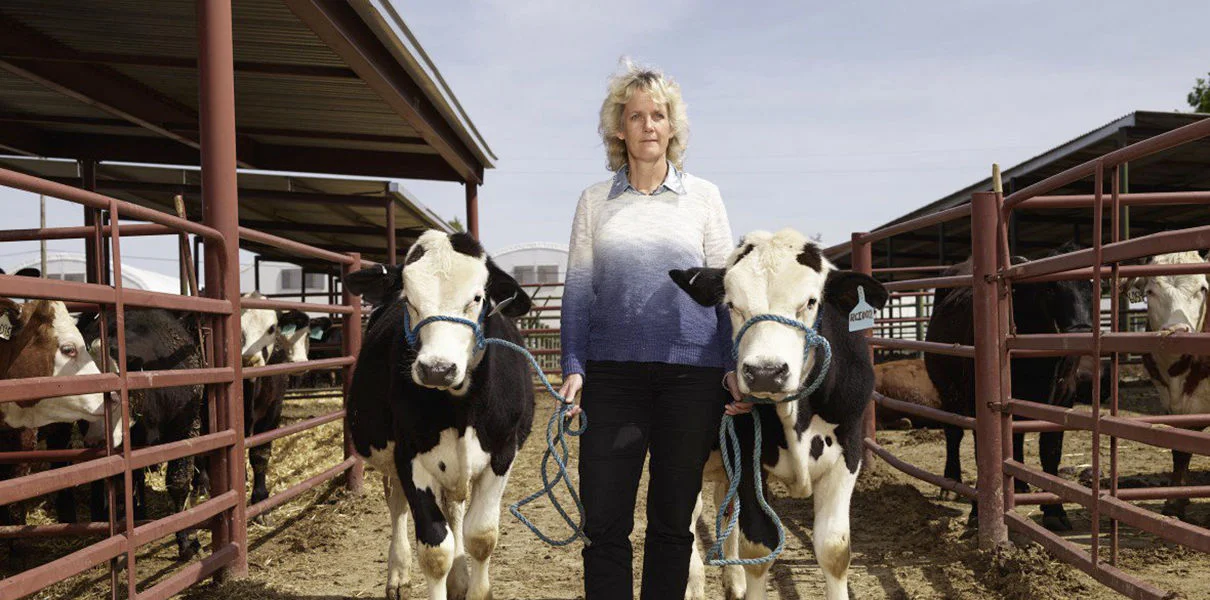Geneticists from the laboratory of the University of
California at Davis are trying to force the bull, using the CRISPR
gene-editing technology, to give only male offspring. This will allow
American breeders, breeding breeds of meat, to increase production of
beef.
The head of the project “Boys Only” (“Only Boys”), Alison van
Einennaam, has been engaged in genetic editing of livestock for many
years. Among her achievements is the elimination of the dairy cows
without cows. Now, scientists have been able to insert the SRY gene into
the skin cells of the producer bull to give either ordinary male bulls
or calves with two X chromosomes, but with the SRY gene that changes the
sex characteristics of the animal and increases its muscle mass. The
only difference between this bull and the present is that it is sterile,
its sex glands do not produce spermatozoa.
Such ersatz-bulls are 15% more effective than cows in the set of muscle mass, which is necessary for the production of beef. In addition, it is cheaper than artificial insemination, which is now used to obtain male offspring. So far only the first step has been done – the SRY gene is added to the X-chromosome of the bull’s skin cells. In order for an “artificial” bull to be born, it is necessary to make similar editing in the embryo. And if it does not work, then clone the animal.
Van Einennaam has for many years been fighting for the recognition of GMOs in all forms – participating in public debates, filming in documentary films, but mostly – advising farmers, trying to disseminate scientific knowledge among them. This case is extremely difficult: for all the years it was possible to obtain permission only for the breeding of one genetically modified species – a rapidly growing salmon.
In January 2017, the administration of former US President Barack Obama issued a decree that animals that underwent genomic editing of CRISPR are equated to new types of drugs and require complex and expensive safety tests. Companies are trying to lobby for the repeal of this law, fearing that Argentina and Brazil will be the first in this sphere. However, the research of the laboratory van Einennaam is financed not by a private foundation, but by the US Department of Agriculture. With the condition that the resulting organisms are sterile, that is, they could not start a genetic infection, writes MIT Technology Review.
Beijing scientists reported last year about the appearance of the first pigs with the genes of mice, obtained by the method of gene editing CRISPR-Cas9. The UPC1 gene allowed them to strengthen the fat burning process, so pig meat should be more lean.
Such ersatz-bulls are 15% more effective than cows in the set of muscle mass, which is necessary for the production of beef. In addition, it is cheaper than artificial insemination, which is now used to obtain male offspring. So far only the first step has been done – the SRY gene is added to the X-chromosome of the bull’s skin cells. In order for an “artificial” bull to be born, it is necessary to make similar editing in the embryo. And if it does not work, then clone the animal.
Van Einennaam has for many years been fighting for the recognition of GMOs in all forms – participating in public debates, filming in documentary films, but mostly – advising farmers, trying to disseminate scientific knowledge among them. This case is extremely difficult: for all the years it was possible to obtain permission only for the breeding of one genetically modified species – a rapidly growing salmon.
In January 2017, the administration of former US President Barack Obama issued a decree that animals that underwent genomic editing of CRISPR are equated to new types of drugs and require complex and expensive safety tests. Companies are trying to lobby for the repeal of this law, fearing that Argentina and Brazil will be the first in this sphere. However, the research of the laboratory van Einennaam is financed not by a private foundation, but by the US Department of Agriculture. With the condition that the resulting organisms are sterile, that is, they could not start a genetic infection, writes MIT Technology Review.
Beijing scientists reported last year about the appearance of the first pigs with the genes of mice, obtained by the method of gene editing CRISPR-Cas9. The UPC1 gene allowed them to strengthen the fat burning process, so pig meat should be more lean.
Tags
Science
